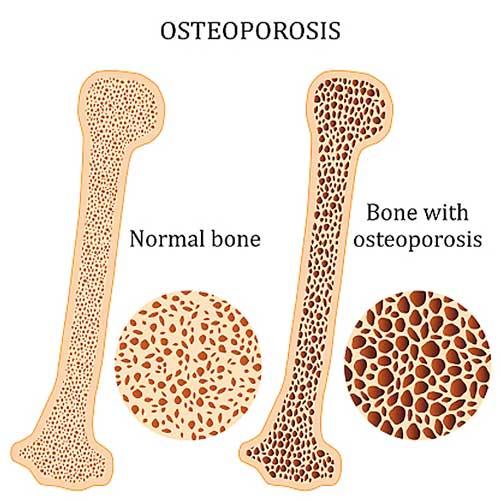Reply To:
Name - Reply Comment
 Bone density, or bone mineral density, is the amount of mineral in the bone tissue. The lower the bone density, the greater the risk of breaking a bone. A bone density test is done to assess the bones, to know if the bones are normal, low in density, causing osteopenia, or osteoporotic (brittle bones, prone to fracture)
Bone density, or bone mineral density, is the amount of mineral in the bone tissue. The lower the bone density, the greater the risk of breaking a bone. A bone density test is done to assess the bones, to know if the bones are normal, low in density, causing osteopenia, or osteoporotic (brittle bones, prone to fracture)
This test is mainly done to diagnose osteoporosis, a condition characterized by weak, brittle bones. In the past, osteoporosis would be suspected only after a fracture. By the time a fracture has occurred, the bones would be quite weak, and the benefit from treatment would not be as fruitful, compared to preventive treatment. Prevention is better than cure and a bone density test calculates the risk of fractures well ahead of time.

A bone density test uses X-rays to measure how many grams of calcium and other bone minerals are packed into a segment of bone. If a less than ideal bone density is identified, measures to prevent further deterioration can be taken. Early treatment helps to prevent bone fractures, as, complications of broken bones related to osteoporosis are often severe, particularly in the elderly. Bone density testing may be used to confirm a diagnosis of osteoporosis in the presence of a pre existing bone fracture, to predict the chances of fracturing a bone in the future, to determine the rate of bone loss, in patients who are at a risk of losing bone mass, and in patients who are already receiving treatment, this test helps in monitoring the progress of the treatment.
Who are at risk of developing Osteoporosis?
Post-menopausal women who are not taking estrogen supplements, women over the age of 65 and men over the age of 70, smokers, individuals with family histories of hip fracture, patients using steroids and *other medicines over a long period, Patients with certain diseases, including rheumatoid arthritis, type 1 diabetes mellitus, liver disease, kidney disease, hyperthyroidism, or hyperparathyroidism, Individuals who consume alcohol regularly, and in excessive amounts, and those who are underweight, with a low BMI ( Body Mass Index) are at a risk of developing osteoporosis sooner or later, and would benefit from bone density scanning.
The bone density test results are reported using a scoring system called the “T-score”. A T-score is a relative score which shows how low or how high your bone density is, in comparison to the bone density of a healthy 30-year old adult. The lower a person’s T-score, the lower the bone density.
According to the World Health Organisation (WHO), a T-score of -1.0 or above is normal bone density, in healthy adults.
A T-score between -1.0 and -2.5 means a person has osteopenia (low bone density). Having low bone osteopenia doesn’t necessarily mean a diagnosis of osteoporosis, however, the chance of developing osteoporosis if you lose bone in the future, will be greater. (How you lose bone)
A T-score of -2.5 or below, (example -2.6, -3.3 and -3.9) will translate to a diagnosis of osteoporosis.
Bone density tests are quick, painless and convenient, as no prior preparations are required, however, calcium supplements should be avoided 24 hours prior to the test, as this can intervene with the results.
As it is with most conditions, low bone density and progression of osteoporosis can be contained with prompt risk identification and preventive therapy. Those at risk may ask their physicians for their insight. We, are a lucky generation that dwells among advances that were once beyond the reach of our past generations. Let us benefit from the scientific advances within our reach, and improve the quality of life as individuals, and as a society as a whole.